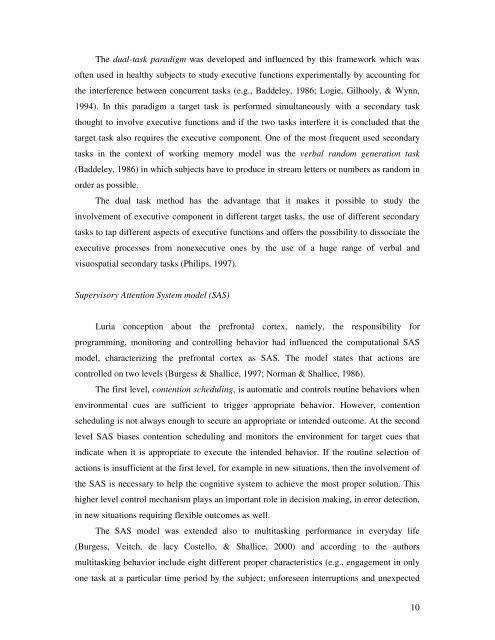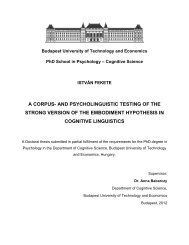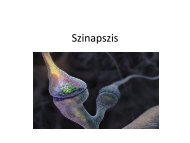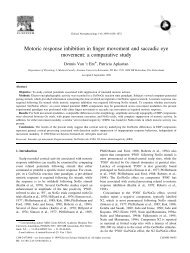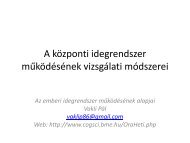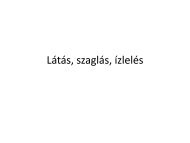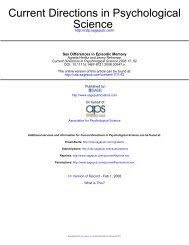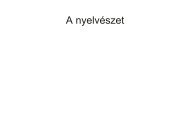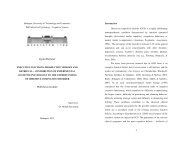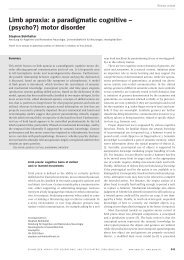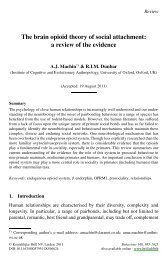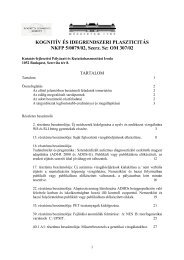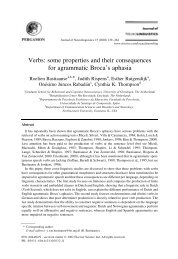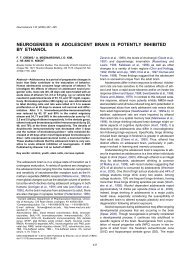Gyula Demeter
Gyula Demeter
Gyula Demeter
Create successful ePaper yourself
Turn your PDF publications into a flip-book with our unique Google optimized e-Paper software.
The dual-task paradigm was developed and influenced by this framework which was<br />
often used in healthy subjects to study executive functions experimentally by accounting for<br />
the interference between concurrent tasks (e.g., Baddeley, 1986; Logie, Gilhooly, & Wynn,<br />
1994). In this paradigm a target task is performed simultaneously with a secondary task<br />
thought to involve executive functions and if the two tasks interfere it is concluded that the<br />
target task also requires the executive component. One of the most frequent used secondary<br />
tasks in the context of working memory model was the verbal random generation task<br />
(Baddeley, 1986) in which subjects have to produce in stream letters or numbers as random in<br />
order as possible.<br />
The dual task method has the advantage that it makes it possible to study the<br />
involvement of executive component in different target tasks, the use of different secondary<br />
tasks to tap different aspects of executive functions and offers the possibility to dissociate the<br />
executive processes from nonexecutive ones by the use of a huge range of verbal and<br />
visuospatial secondary tasks (Philips, 1997).<br />
Supervisory Attention System model (SAS)<br />
Luria conception about the prefrontal cortex, namely, the responsibility for<br />
programming, monitoring and controlling behavior had influenced the computational SAS<br />
model, characterizing the prefrontal cortex as SAS. The model states that actions are<br />
controlled on two levels (Burgess & Shallice, 1997; Norman & Shallice, 1986).<br />
The first level, contention scheduling, is automatic and controls routine behaviors when<br />
environmental cues are sufficient to trigger appropriate behavior. However, contention<br />
scheduling is not always enough to secure an appropriate or intended outcome. At the second<br />
level SAS biases contention scheduling and monitors the environment for target cues that<br />
indicate when it is appropriate to execute the intended behavior. If the routine selection of<br />
actions is insufficient at the first level, for example in new situations, then the involvement of<br />
the SAS is necessary to help the cognitive system to achieve the most proper solution. This<br />
higher level control mechanism plays an important role in decision making, in error detection,<br />
in new situations requiring flexible outcomes as well.<br />
The SAS model was extended also to multitasking performance in everyday life<br />
(Burgess, Veitch, de lacy Costello, & Shallice, 2000) and according to the authors<br />
multitasking behavior include eight different proper characteristics (e.g., engagement in only<br />
one task at a particular time period by the subject; unforeseen interruptions and unexpected<br />
10


